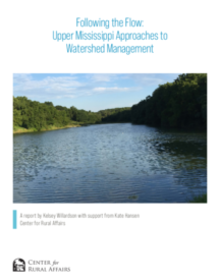In Iowa and the Midwest region, agricultural excellence, robust soils, and ample outdoor recreation are points of pride. All of these elements relate to water and depend upon healthy watersheds. To ensure they are protected and preserved, proper watershed management is essential.
We all live in a watershed. As defined by the U.S. Geological Survey (USGS), a watershed is “an area of land that drains all the streams and rainfall to a common outlet such as the outflow of a reservoir, mouth of a bay, or any point along a stream channel.” Watersheds can be very small, including only small streams, or extremely large, including tributaries into big bodies of water. The word watershed may sometimes be used interchangeably with drainage basin or catchment.
Iowa falls within the Mississippi River Drainage Basin, the third-largest in the world. All or a portion of 31 states and parts of Canada make up the basin, which covers more than 1,245,000 square miles. As Iowa is entirely situated within the basin, its water is ultimately destined for the Mississippi River and beyond.
Watershed management efforts are underway in Iowa, but the potential to bolster these efforts with new strategies remains. This report will compare Iowa’s watershed management activities, particularly those relating to Watershed Management Authorities (WMA), with neighboring states within the Mississippi River Drainage Basin—Minnesota and Wisconsin—to glean best practices.


